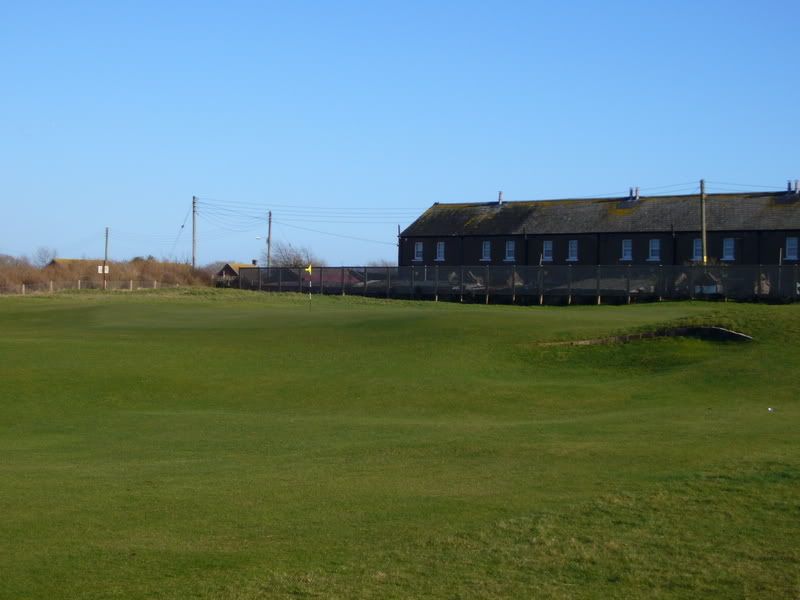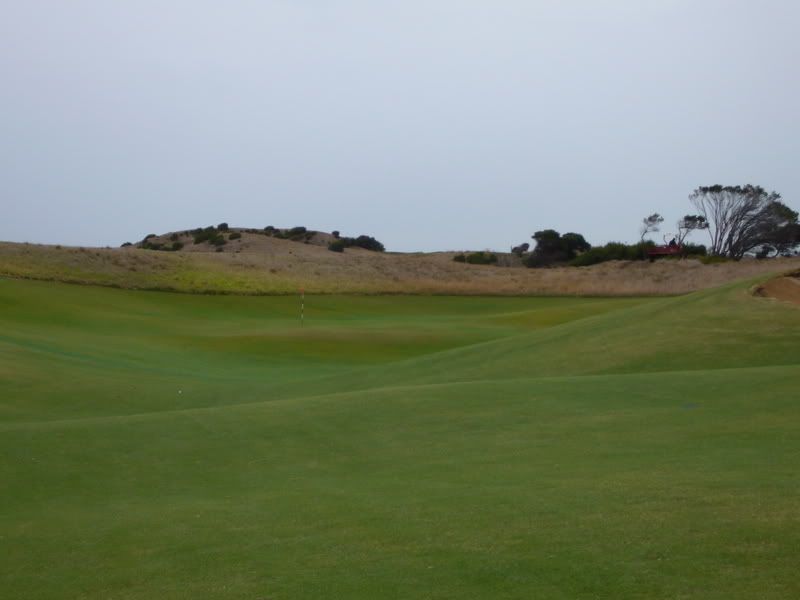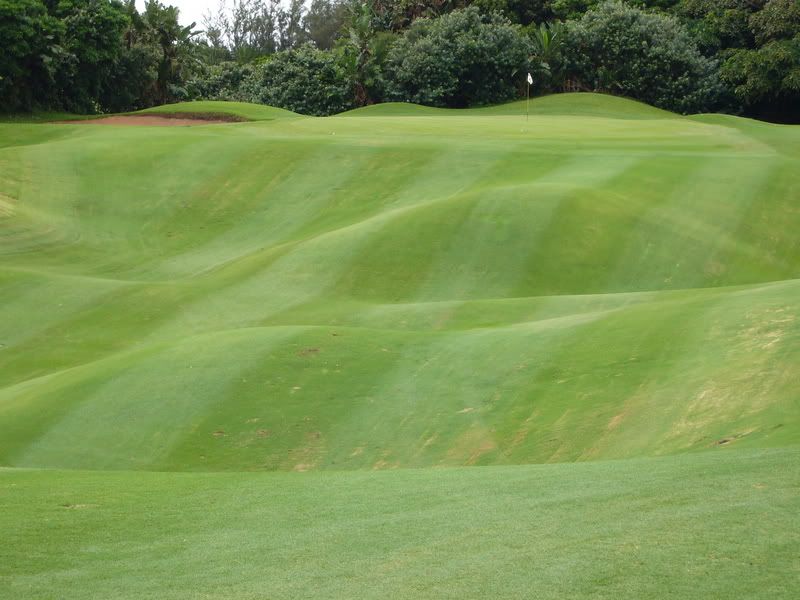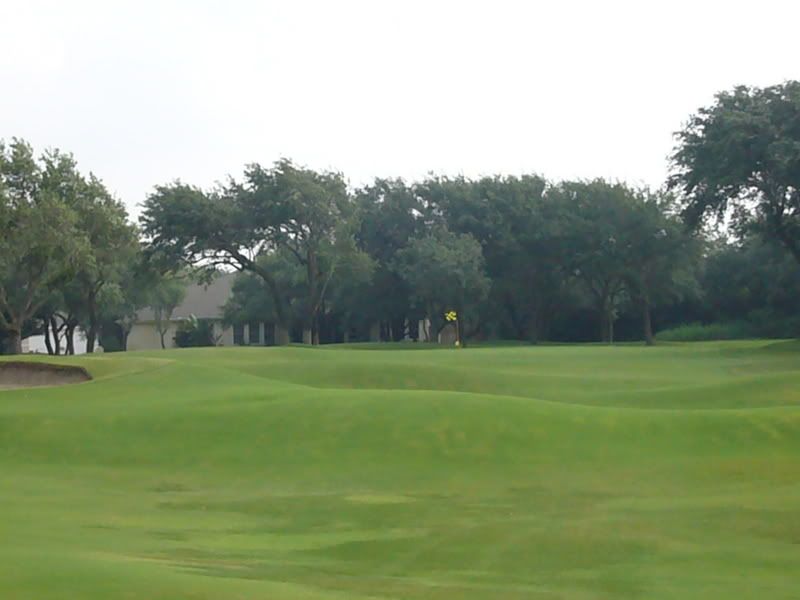Mostly when I think of the ground game I think of the conditions (wind) and conditioning (firm and fast) of the course. I've started this thread to help me think about the architect's contribution, beyond the obvious (open route to green).
So here goes...
1.
False fronts: perhaps more than any design element, most likely to cause paralysis by analysis in my fragile mental state. Oh no! what should I do?
Partial brain lock:

Total brain lock:

2.
Slingshots: aim to one side or another, watch ball slingshot around to a destination at right angle to initial line of shot.
A ball landing just right of the trolley in the middle of the picture (10 meters left of green) will end up near flag:

3.
Turbo boosts: ball hit (aerially) to proper spot produces turbo boost of added distance. 10 Augusta the famous example, how bout the greatest driveable 4 built after WWII (IMHO) -- ball that lands out of picture bottom left will kick forward and then use greenside slingshot feature to roll all the way to far section of green:

4.
Washboards / "deflectors": who knows what happens?! Most famous perhaps the 8th Prairie Dunes; what are other good ones?
Buckle up...


5.
Sentries: don't hit it here! Great for influencing positioning on prior shot. Works even better when green relative to sentry is small.
This bunker certainly influences choice of line on approach
and off the tee. Also shows the role trees can play in whether to go ground or air:

6.
Green rolls: giant humps, rolls, and swales in greens:
 What are more examples of these elements, and what are other taxonomic entries? Please post pictures if you have them, highly-detailed "word pictures" if you don't!
What are more examples of these elements, and what are other taxonomic entries? Please post pictures if you have them, highly-detailed "word pictures" if you don't!Mark